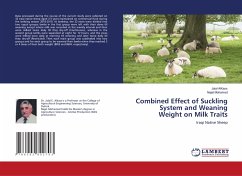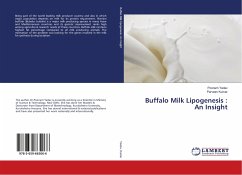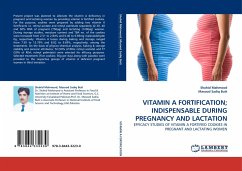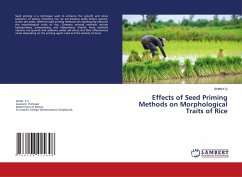
Combined Effect of Suckling System and Weaning Weight on Milk Traits
Iraqi Native Sheep
Versandkostenfrei!
Versandfertig in 6-10 Tagen
27,99 €
inkl. MwSt.

PAYBACK Punkte
14 °P sammeln!
Data processed during the course of the current study were collected on 32 Iraqi native sheep aged 2-5 years maintained on commercial flock during the lambing season 2018-2019. At lambing, the 32 ewes were divided into two equal groups: lambs in the first group were left with their dams till weaning except where milk was recorded at the weekly interval and then were milked twice daily till they dry-off (Continuous), whereas in the second group lambs were separated at night for 12 hours; and the ewes were milked once daily at morning till weaning and later twice daily till they dry-off (Restric...
Data processed during the course of the current study were collected on 32 Iraqi native sheep aged 2-5 years maintained on commercial flock during the lambing season 2018-2019. At lambing, the 32 ewes were divided into two equal groups: lambs in the first group were left with their dams till weaning except where milk was recorded at the weekly interval and then were milked twice daily till they dry-off (Continuous), whereas in the second group lambs were separated at night for 12 hours; and the ewes were milked once daily at morning till weaning and later twice daily till they dry-off (Restricted). Then each main group was subdivided into two groups and for each group to be weaned their lambs when they reached 3 or 4 times of their birth weight (BW3 and BW4, respectively).












